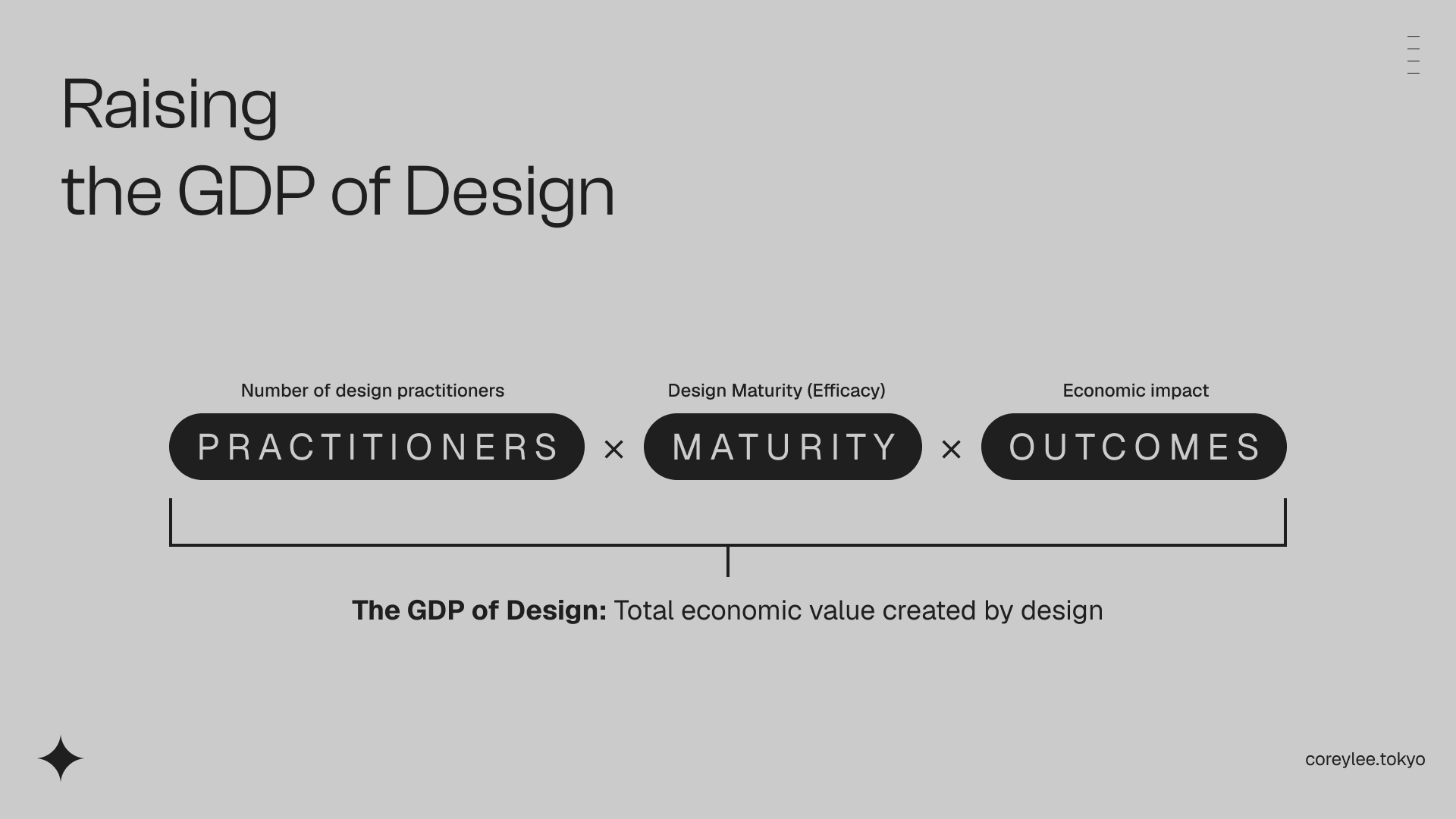
Raising the GDP of Design
Aug 05, 2025
Over the past three years I've shipped the best design work of my career. I can say with absolute confidence I am at the top of my game and still improving.
I've been quietly designing my ass off, but you might have missed it.
If you are looking for artifacts in pixels, you won't find them here.
Designing the market
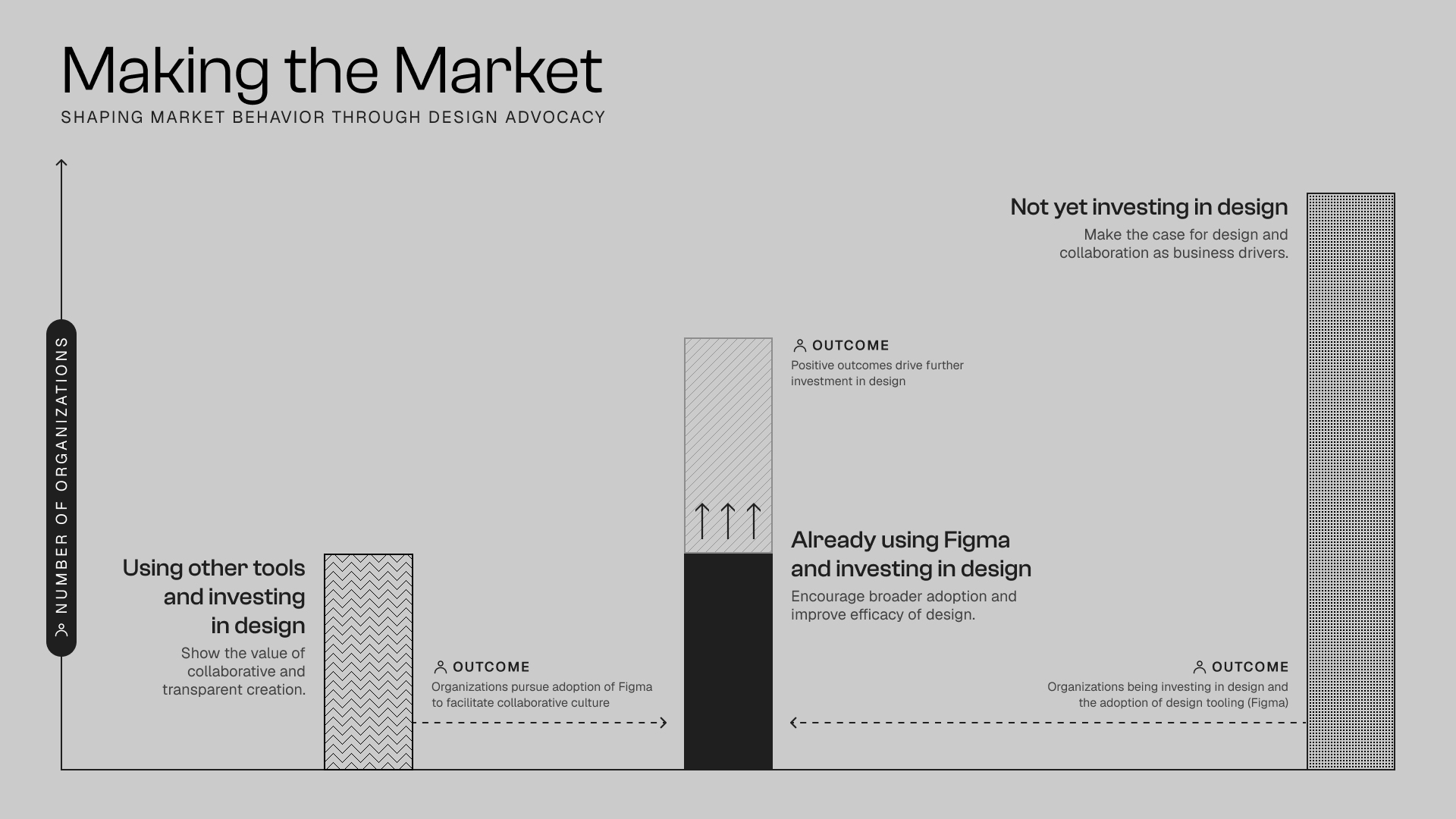
While most designers are focused on designing products to fit a market, I've been designing the market to fit the product. Over the last three years I've been laser focused on influencing the design industry and the people building digital products—shaping them to fit the product that is Figma.
I influenced organizations into embracing design management and giving design a seat at the table. I inspired design leaders to build more effective design organizations with the concept of design maturity.
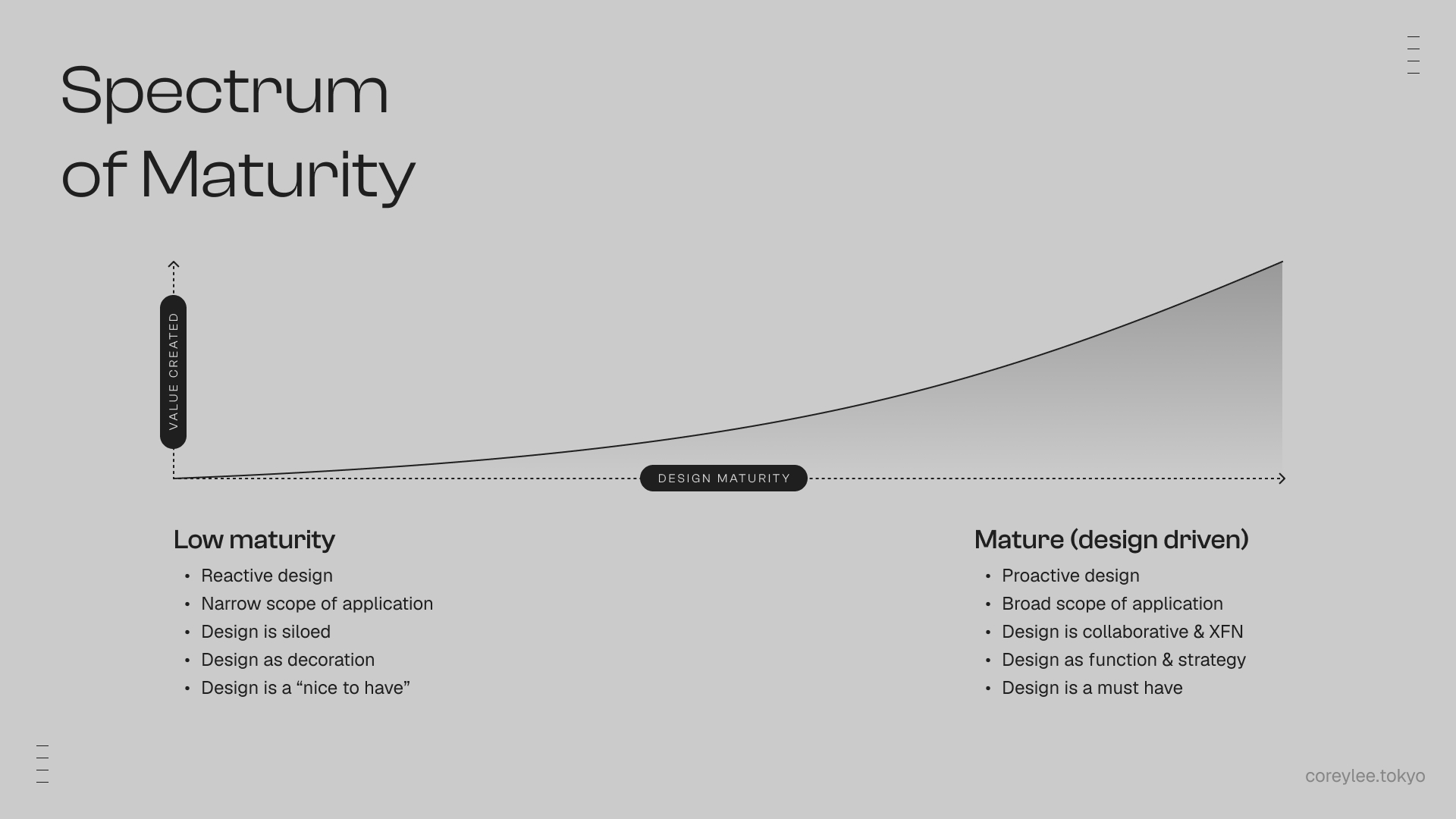
I've influenced the product strategy of numerous organizations worldwide, inspiring founders to build more design-driven products and convinced them that design is the differentiator. I championed the democratization of design, to make design for everyone.
I convinced teams working in silos that a culture of transparency and open collaboration is a better way of working. That nothing great is made alone.
I demonstrated the value of design in business through case studies, data points, and personal experience. I wrote a thesis on the strengths of design-driven organizations and how to build design-driven culture—to get businesses not yet invested in design to embrace it.
I spent countless nights crafting stories that would create empathy and stir an emotional response with audiences. I taught others how to craft their stories, too.
I presented on stages to thousands of attendees, in multiple countries, and in multiple languages, encouraging designers and organizations to push the boundaries of design, to champion it, and convincing them to believe just as I do that more design in more places leads to better outcomes. I spent just as much time behind the scenes, working to shine the spotlight on others to do the same.
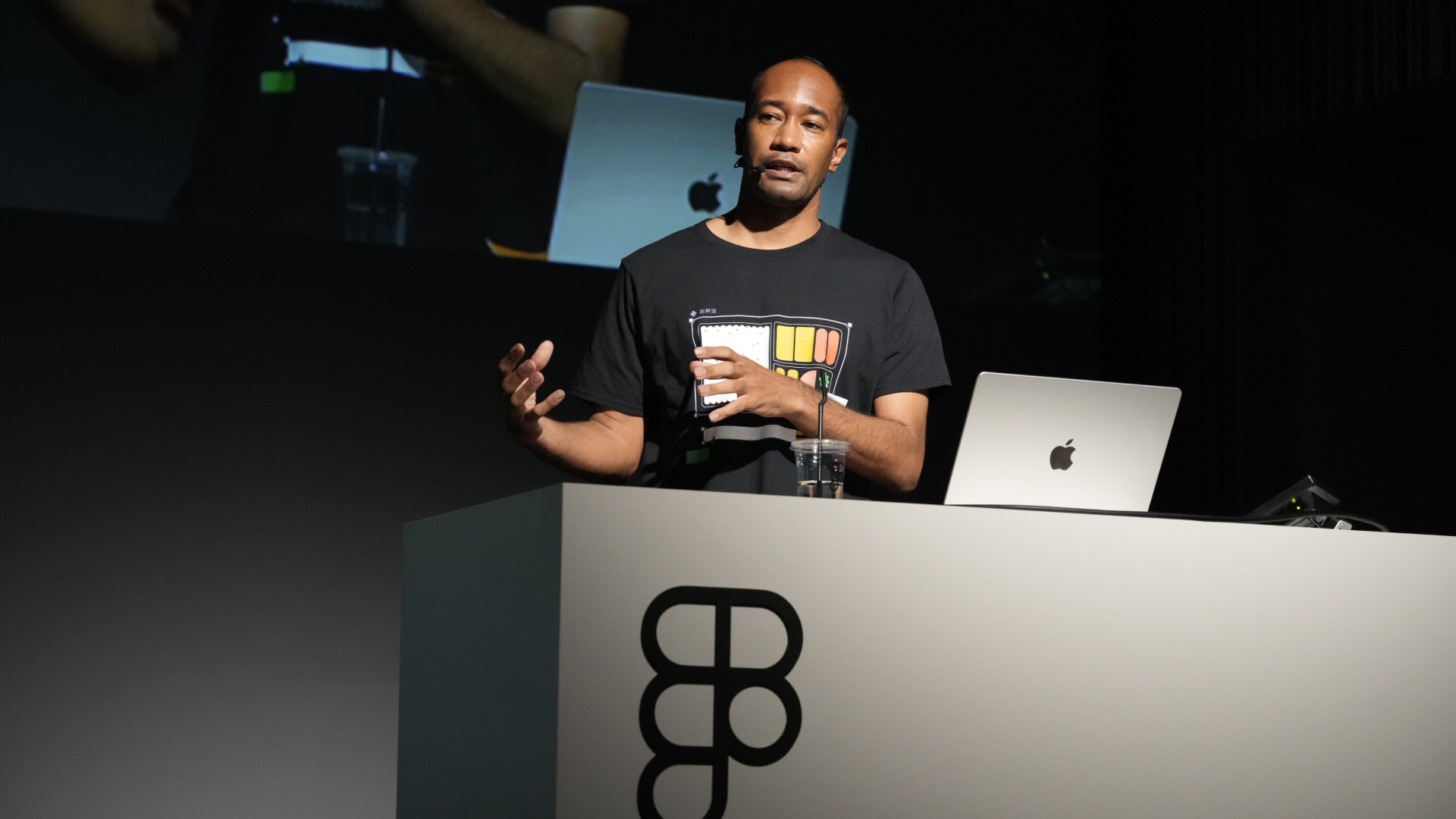
Three years of designing to influence people and organizations. Getting them to embrace design and collaborative culture. Equipping them with the tools to demonstrate the value of design, articulate it's value in business and arrive at successful outcomes.
To create a market that believes in the potential of design and is ready to invest in it. A market ready to embrace Figma.
But also because I just fucking love design.
Designing the Organization
Along with designing the market, I've been secretly designing the organization at Figma too—to align with my strategy.
I influenced my peers with my vision for advocacy through strategy, narratives, and actions.
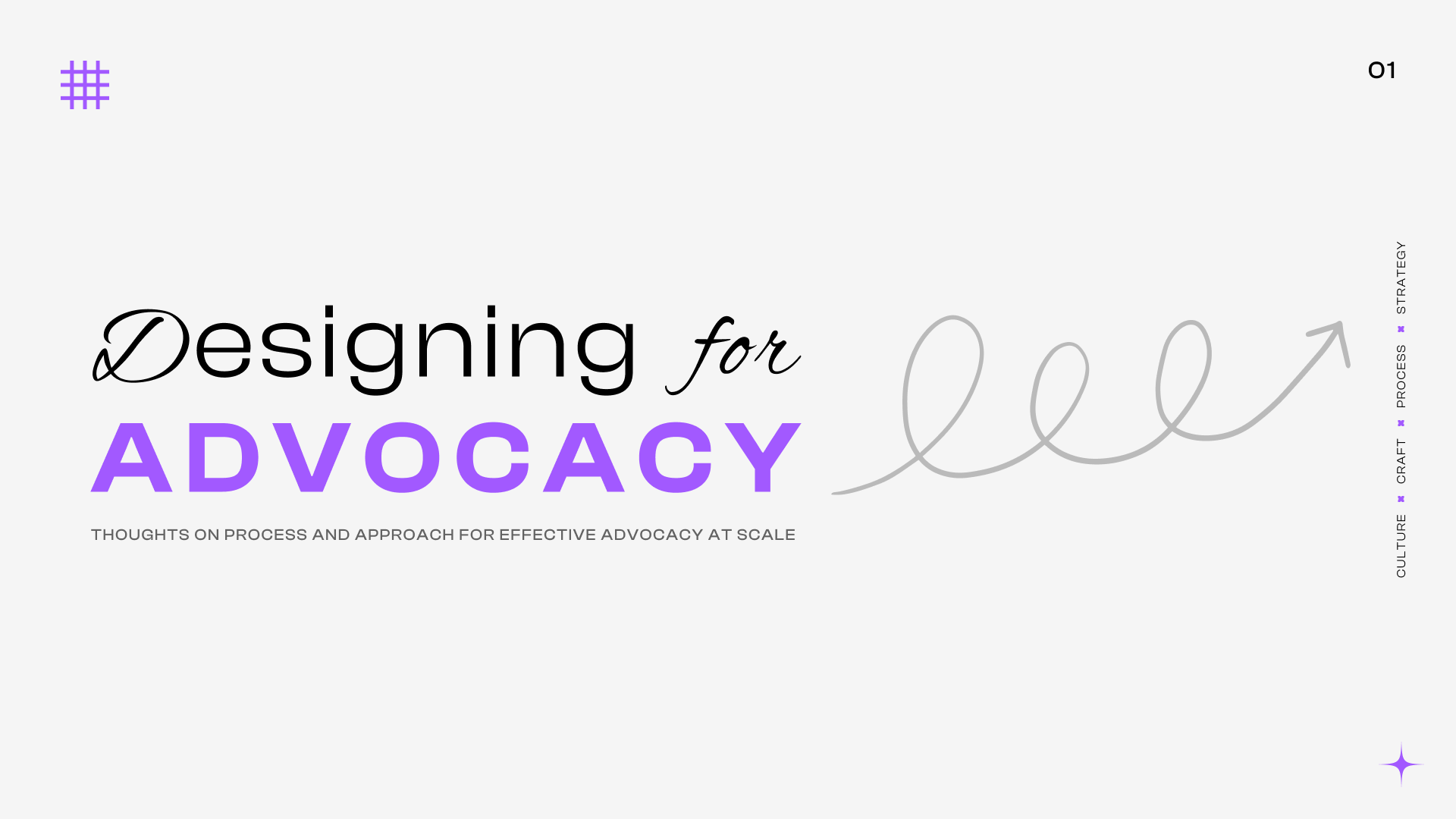
I contributed to the success of an incredibly lean, high-performing, and award-winning marketing team—leveraging it as a vehicle to amplify the reach of my ideas on a global scale.

I taught sales and marketing teams how to define narratives that sell products through shared vision and empathy, not just features. I watched deals close as I told stories to teams, inspiring them with a vision of what could be.
I influenced millions of dollars in ARR, with more words and ideas than components or pixels. I raised internal awareness of concepts such as design maturity, and watched as that influenced strategy and the creation of programs that continue to drive the business today.
This is how I design.
I design with stories, and vision. I design with strategy. I design to influence the way people think and act in a way that leads to desirable conditions.
I design for outcomes.
This is what designing the market to fit the product looks like. These are the artifacts of my greatest design work yet.
And I'm just getting started.
Raising the GDP of Design
While I may no longer be an advocate in title, I'm still advocating—working to influence the market toward better outcomes for design.
If you aren't convinced yet, decades of data have already demonstrated the value of design in business. Design is now everyone's business and it's only going to get more important from here on.
As technology continues to evolve at a rapid pace, we'll need design to shape it into something more usable, comprehensible, and consumable. We'll also need it to break free from the singularity of sameness and create differentiation, too.
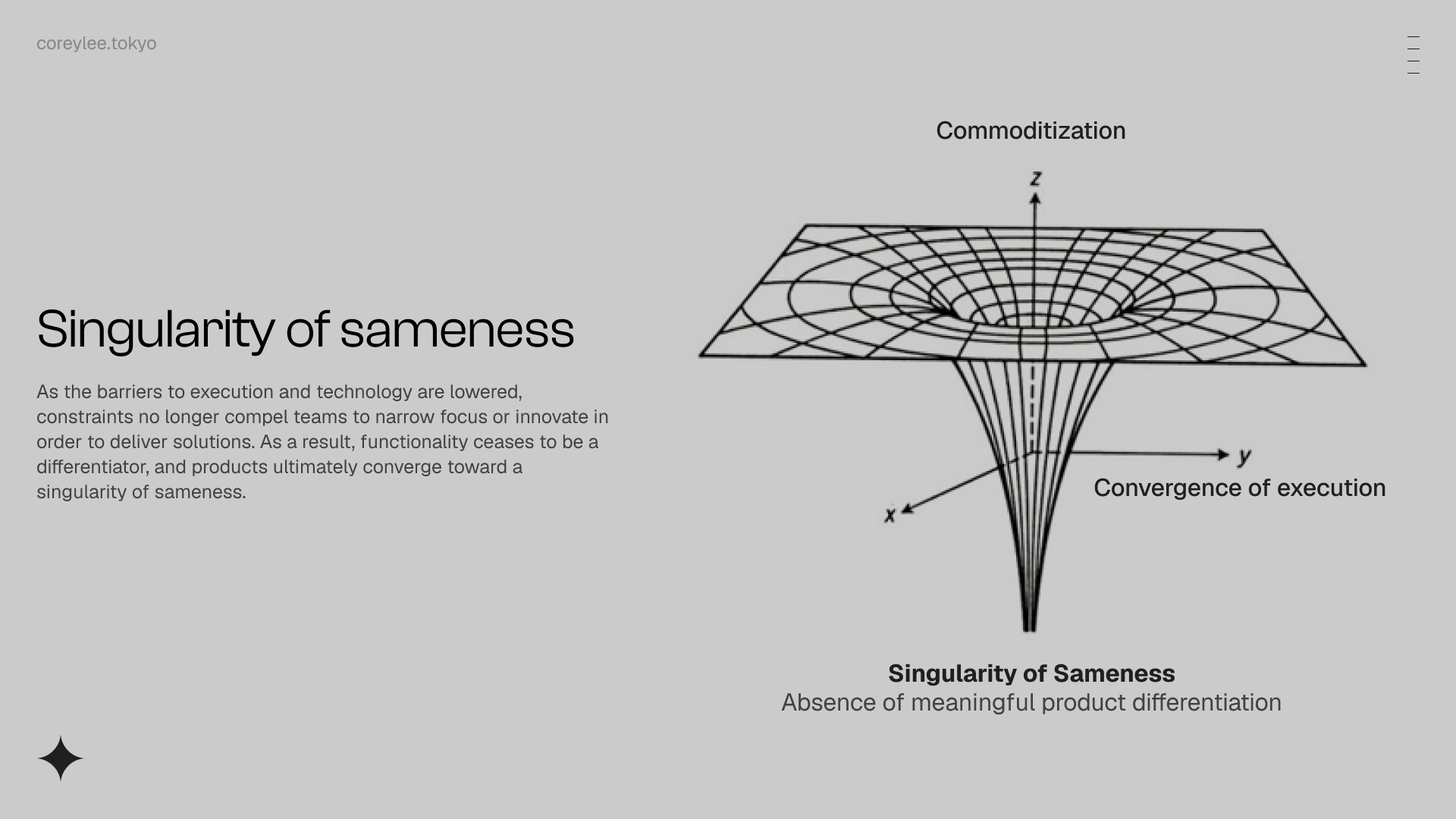 I'm locked in on design—and I think you should be, too.
I'm locked in on design—and I think you should be, too.
I'm not just passively betting on design; I'm actively stacking the odds in my favor.
After three years in the lab, working with hundreds of organizations and thousands of individuals, creating hypotheses and testing them at scale, it's now time to go back into the field.
I'm designing to raise the GDP of design—increasing the value created through design by inspiring organizations to invest in design, and supporting them toward successful outcomes.
Defining the GDP of Design
The GDP of Design isn't an abstract concept—it's a model to quantify the total economic value created by design. This is where design's theoretical potential becomes measurable economic impact. By understanding the mechanisms it is comprised of, we can actively influence its growth, leading to better outcomes for design.
GDP of Design—Total economic value created by design.
The GDP of design consists of three key factors:
Practitioners: The number of practitioners actively engaged in design work across all disciplines and industries. Not constrained to traditional designers, but also the growing number of people applying design-driven approaches within other roles (product managers, engineers, marketers, and other non-designer roles etc.). Increasing the number of designers as well as democratizing design for non-designers as a tool for thought and creation are both drivers of growth for this factor.
Maturity: The efficacy of design execution—how well design work actually performs. This encompasses technical skill, process maturity, access to tools and resources, collaboration effectiveness, and general design quality. Educating design practitioners on the best practices of design and empowering teams to deliver greater levels of design quality contributes to raising the efficacy of design (design maturity).
Outcomes: Successful business outcomes created by design, measured by the conversion of design work into actual economic value: increased revenue, cost savings, market share gains, new market creation, improved customer lifetime value, etc. Making space for more design in more places where it can create value increases the likelihood of positive outcomes being achieved. Successful outcomes also influence those yet to invest (late-adopters) to begin engaging in design—creating a flywheel effect that accelerates adoption.
While it may not always be possible to accurately measure all factors, it's crucial to understand how they feed into the GDP of design so that we may leverage them to raise it further.
Out of the lab. Into the field.
Combining a career's worth of learning with insights at a global scale, I'm now taking what I've learned from the teams pushing the boundaries of what can be done with design today and applying it to the ones who aren't quite there yet—to build them into the leaders of tomorrow.
I've been quietly heads down codifying approaches, defining frameworks, creating resources, and forging partnerships to enable the next generation of design practitioners and product teams to build design-driven products that matter.
If you love design as much as I do, or are just design curious, I'm building for you.
So are you in? Are you ready to build design-driven products and raise the GDP of design? If so, let's talk. You know where to find me.
If you don't want to miss what I'm building, follow the journey here.
If you're ready to roll up your sleeves and go deep into driving growth with design, I'm ready, too.
— Corey